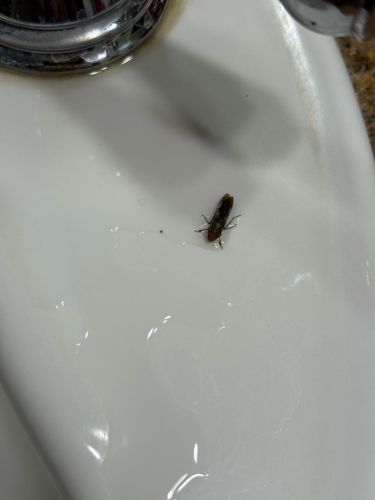Click Beetle (Likely a species of Click Beetle)
Scientific Name: Elateridae (Family level, specific genus/species cannot be determined from the image alone)
Order & Family: Order: Coleoptera, Family: Elateridae
Size: Most click beetles range from 2 mm to 60 mm (approximately 0.08 to 2.4 inches) in length, depending on the species. The individual in the image appears to be in the smaller to medium range.

Natural Habitat
Click beetles are found in diverse habitats worldwide, including forests, grasslands, agricultural fields, and gardens. Adults are often found on vegetation, under bark, or near lights. Wireworms live in the soil, often preferring moist conditions and areas with abundant plant matter.
Diet & Feeding
Adult click beetles primarily feed on pollen, nectar, and sometimes soft-bodied insects. Larvae, known as wireworms, are typically herbivorous and feed on the roots, seeds, and underground stems of various plants, including agricultural crops. Some wireworm species are predatory, feeding on other soil-dwelling invertebrates.
Behavior Patterns
Click beetles are known for their ability to 'click' and jump into the air when they are on their backs, using a spine on their prosternum to engage with a notch on their mesosternum. This mechanism helps them right themselves and escape predators. They are mostly nocturnal and are attracted to lights at night. Larvae (wireworms) live in soil or decaying wood and can spend several years maturing.
Risks & Benefits
The primary risk associated with click beetles comes from their larval stage, wireworms. Certain species of wireworms are significant agricultural pests, causing damage to crops like corn, potatoes, wheat, and soybeans by feeding on their roots and seeds, leading to economic losses. Benefits of adult click beetles are relatively minor; they may play a role in pollination by visiting flowers. Some wireworm species are beneficial as predators of other soil pests.
Identified on: 8/22/2025